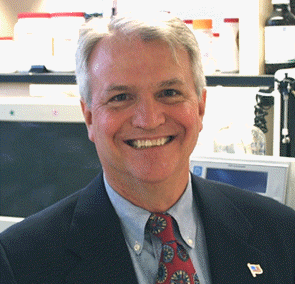|
|
Sontra Medical Corporation (SONT) |
|
|
CEOCFO CEOCFO Monthly Analyst |
"To print this page go to file and left click on print" Sontra Medical Corporation is now in
the final product development Phase with their SonoPrep® device for a non-invasive
approach to making the skin permeable Bio of CEO, Other product development programs
include: CEOCFOinterviews:
Dr. Davison, where was Sontra Medical Corporation when you became its CEO and what changes
did you orchestrate? Dr. Davison: “When I came here in May, Sontra Medical, had developed a very effective device for making the skin permeable. However, the company was still predominantly research oriented. Today, we are predominantly a product development company and we are investigating various applications for our skin permeation technology. Our current efforts also include development of a sensor for blood glucose detection that will provide for a continuous glucose monitor for managing diabetics. We have a very clear-cut time-line towards the development of the SonoPrep® device for the blood glucose monitor and a Skin Prep application for delivering a topical anesthetic drug that will make the skin numb immediately. We believe the Skin Prep application will significantly improve EKG readings and other electrophysiological measurements.” CEOCFOinterviews: Where exactly are you in the development of these
products? Dr. Davison: “Our SonoPrep®
device for the drug delivery of the topical anesthetic and for the Skin
Prep application for electrophysiology, is just
entering into the final product development Phase. Our aim is for the product to be
released by the end of next year (2003).” CEOCFOinterviews: How does the SonoPrep®
technology work? Dr. Davison: “The SonoPrep®
device, is an ultrasound mediated, skin permeation device; it provides a low-frequency
ultrasonic energy through a liquid coupling medium. Cavitation
and relatively high sheer forces within the coupling medium disorganizes the lipids that
are in the outer layer of the skin. The stratum corneum (outermost layer of the skin) is
the protective coating of the body, and by disorganizing the lipids, it makes the skin
permeable to water. Drugs that are water based can very easily go through the skin and
into the capillary bed and analytes such as glucose can diffuse through the skin to the
surface for analysis by sensors. CEOCFOinterviews: Can your device have an affect on the cost of
healthcare? Dr. Davison: “In the electrophysiology area, we are gong to be
doing clinical studies in a number of areas, and we believe that by making the skin
resistance almost negligible, the physicians will be able to see signals that they
otherwise cannot see. We have been looking at evaluating nerve conductivity; and in this
application, reduced impendance can significantly reduce the amount of error. In stress
test EKG, the technology can significantly improve the sensitivity and specificity of
those tests, so that there are fewer erroneous results that lead to additional costly
procedures that would be done or repeating procedures. The bottom line is, we expect to
significantly reduce the overall cost of disease management, by making the tests more
accurate, or enabling the physicians to see signals that they couldn’t otherwise have
seen.” CEOCFOinterviews: That doesn’t sound very expensive for what
it can do! Dr. Davison: “We don’t think it is either. Our goal is to
expand the applications of the SonoPrep® device, and to
develop the product so it is affordable, and we expect that will make the purchase
decision very easy for the end user. In most cases, the application of the device will be
enabling, so that drugs that normally cannot be delivered transdermally, will be delivered
transdermally. We have seen plenty of applications in the diagnostic end, beginning with
blood glucose and going to a complete blood analysis performed without needles through a
transdermally patch that would pick up and collect all of the analytes that need to be
evaluated.” CEOCFOinterviews: Is this patented technology, and do you own it? Dr. Davison: “Yes, the technology is patented. It technology
was developed originally at MIT, in Dr. Robert Langer’s laboratory. Dr. Langer is a
preeminent scientist in drug delivery. His associate, Dr. Joseph Kost, who, today, the
Chief Scientific Officer of Sontra, Together they developed a patent portfolio that was
licensed by Sontra when it was incorporated. Since then, we have expanded the patent
portfolio and intellectual property significantly. We currently have eleven patents that
have been issued and several others that have been allowed; we will be announcing various
new issuances as they occur in the near future. These patents create a very solid
‘picket fence’ around the intellectual property for our SonoPrep®
device and for the methods that we use to combine this technology with others for glucose
detection and drug delivery.” CEOCFOinterviews: What sets Sontra Medical apart from other
companies in your industry? Dr. Davison: “There are several initiatives on the blood
glucose monitoring side of our business, because the major companies and all the
physicians in the world see that a non-invasive continuous glucose monitor would be a
‘Holy Grail’ and change the way physicians are able to manage diabetes. There is
a lot of interest in this area and there are several companies that are at Sontra’s
stage, which have relatively non-invasive methods for doing a continuous glucose monitor.
There are several companies whose products are electrodes that are implanted under the
skin that provide continuous glucose readings. CEOCFOinterviews: What is the plan for getting the products out
into the market? Dr. Davison: “Our strategy is very clear for the diabetes
management product; we are looking for a strategic partner. We are in conversations with
and have had evaluations with several prospective partners and we expect to consummate a
strategic relationship before the end of the first half of next year. The relationship
would give our partner exclusive rights to
our technology for continuous glucose monitoring; we would receive funds to complete the
development of the sensor and would receive a
license fee and eventually a royalty stream. Probably more importantly, we would receive a
supply contract for SonoPrep® because we will be the
manufacturers of SonoPrep®. We, most likely, also will
manufacture the coupling agent. The ultrasonic coupling fluid that is delivered between
the ultrasonic device and the skin is proprietary technology.” CEOCFOinterviews: What is your current cash and credit position? Dr. Davison: “We currently have 2.8 million dollars; our cash
burn is 300 thousand a month and we expect to consummate a strategic partnership probably
before the money runs out. We are also looking at some alternative means of
financing.” CEOCFOinterviews: Will you tell us a little about the size of the
market you are addressing for the various products? Dr. Davison: “Home glucose monitoring is a 4 billion dollar market that is growing
rapidly. It is expected to reach 8 billion in the year “2007.” Growth in that
market segment, is the result of the Diabetes Control Study that was publised in
1992-1993. The study proved that more
frequent glucose monitoring and adjustment of the insulin level, significantly reduced
complications do to diabetes. The topical anesthetic is our first drug delivery
application; there are many more opportunities in drug delivery and the market for
transdermal drug delivery is about 4 billion. That
market is expected to grow to about 15 billion in 3-5 years as transdermal technologies
such as SonoPrep®, are introduced into the market.” CEOCFOinterviews: Can you explain your application for SonoPrep® in the cosmetic area? Dr. Davison: “The cosmetic applications are a sub-segment of
the drug delivery field, although I would prefer to refer to it as the dermatology field.
There are a lot of dermatologic conditions that are cosmetic in nature that require more
effective delivery of various agents into the skin to mitigate skin conditions. These
first applications of SonoPrep® in drug delivery will be to
deliver drugs directly into the skin. The topical anesthetic is such an application;
another application that we are looking into would be the delivery of a ‘photo
dynamic’ therapy agent for treatment of pre-cancerous lesions in dermatology.
Eventually we believe we will be able to deliver chemotherapeutic agents directly into the
skin to treat malignancies without having to do excisions or be able to minimize the
excisions that would have to be done. I agree with the term cosmetic because most of these
dermatologic procedures are cosmetic. Of course, the cancer applications go far beyond
that.” CEOCFOinterviews: How do you decide what particular areas you would
like to target with an application for product development? Dr. Davison: “That is a challenge! When I joined the company,
there was no clearly defined path that was being taken; we were looking at everything. We
are now focusing based on the size of the market opportunities and the creation of a long
and short -term product pipeline. There are some applications, which have significantly
reduced regulatory barriers, and a lot less technical risk; we see those as short- term
applications. We put the EKG, the
electrophysiology prep, and the topical anesthesia application in that category. We plan
to follow these topical drug applications with the other topically applied drugs that can
be improved with skin permeation. CEOCFOinterviews: What is the most important thing for a company
such as Sontra Medical to accomplish before trying to bring your products to the
marketplace? Dr. Davison: “I think the most important thing that we have to
do is establish clinical credibility by doing clinical research and showing the medical
community the data that proves the safety and the efficacy of the applications we are
developing. That is part-and-parcel of marketing any medical product; you have to have
clinical data and you have to have good research performed by highly credible
opinion-leading physicians and surgeons at highly recognized institutions and we are doing
that.” Dr. Davison: “I feel that we offer an opportunity for significant increase in value in the short-term. We expect to achieve several important milestones in the near-term, which would make an investment in the company very high. In the near term we expect to complete a diabetes strategic partnership, and expect to receive a 510 k approval for clearance to market for the SonoPrep® electrophysiology applications and shortly after that, the anesthetic applications. We will be introducing products before the end of next year. We have a very clear pipeline of milestones that we will achieve and those accomplishments will increase our value.”disclaimers |


